Gas Service Installation
As mentioned in an earlier post, I have changed my plans to not bring a natural gas service into the property.
We will not utilize gas for the heating system and instead plan to install an Air to Water Exterior Heat Pump which can be as high as 400% efficient in my climate.I also am a firm believer that a gas cooktop is a very poor choice given the efficiency and cooking speed of today’s inductive cooktops (for those not in the know – induction boils water WAY faster than gas – the web is full of tests showing similar results to this site) . Having a gas cooktop is also on par with having a campfire in your kitchen due to the pollutants the flame spews into your home.
Only reason I would have wanted a gas service was to allow for a natural gas BBQ, but was not going to go through the expenditure just for that.
But then things changed on the back-up generator front. The planned diesel generator just was not making sense. The run time for a full tank would be less than two days, meaning if there was a real emergency where the power was going to be off several days, we would not be covered. The diesel units are also noisier, bigger, and cost way more than the NG units. But the most important aspect is that the NG unit burns so much cleaner than a diesel unit.
When I discovered the connection fee to the utility would be under $200 a year (cost even if we do not use any gas), the decision became that much easier and in September last fall, I applied for the gas permit and installed the gas line.
Obviously we do not want a gas meter on the front of the house and I will have a set of stairs down to the basement on the exterior of the north side, and a sidewalk right against the building on the south side, so we requested a remote meter location from the utility. After some arm twisting they approved. The meter will go on the south side of the house about 10ft away from the house under some tall cedars. This location is roughly in line to where the gas line service connection to the property is located. The meter location is also very close to where the outdoor BBQ pit will be located, so I will get a NG BBQ after all 🙂
Because I was close to the cedar trees and really did not want to disturb roots more than I had to, I used a high pressure water hose (district pressure) with a jet connection to trench through the roots and rocks. And when I hit native undisturbed soil, I was reminded of how rocky our main excavation was! In addition to the hydro-trenching, I also utilized the shop vac to ‘dig’ around the electrical service and phone line conduit.
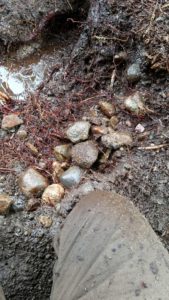
Once the trenching was complete, I was able to run the gas line with tracer wire. The pipe is sized based on the Btu loads of the connected equipment. In my case I ran a 3/4″ poly line to service the genset but also allow some expansion capacity in the future for a ‘just-n-case’. Although the meter and BBQ are in line with where the service enters the property, the generator will be on the opposite side of the house. So a gas line extends from the meter location across the front of the house and down the north side to the generator location. I liked this route because it will later be under concrete sidewalks the entire way and protected.
The easiest approach when installing a gas line is to buy the stab risers and then a length of tube. This allows you to fine tune the overall length based on the trench path taken.
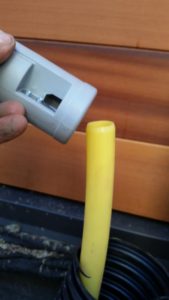
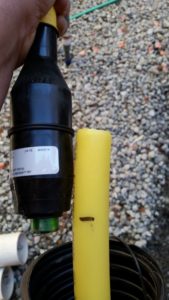
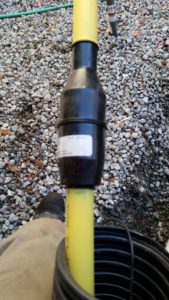
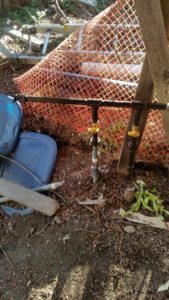
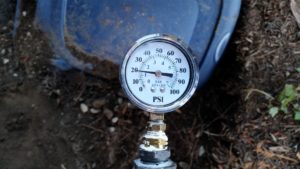
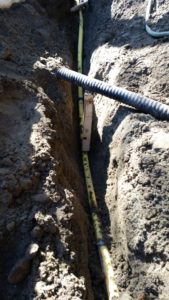
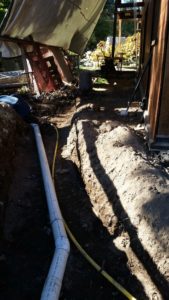
Where you are unable to surround the gas line with clean fill, free from objects that would damage the plastic pipe, it must be run inside a sleeve like shown on the north elevation where it was buried in gravel. I used perforated BIG-O which is about the only thing this material is good for beside draining a farmers field!
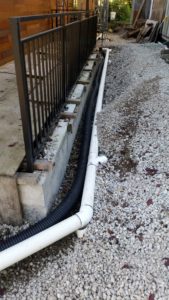
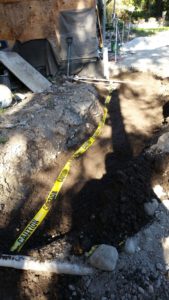
As always, thanks for visiting and please send us your comments or questions.
“Don’t be afraid to be ambitious about your goals. Hard work never stops. Neither should your dreams.” —Dwayne Johnson (born 1972) Actor, Producer, Semi Retired Professional Wrestler
